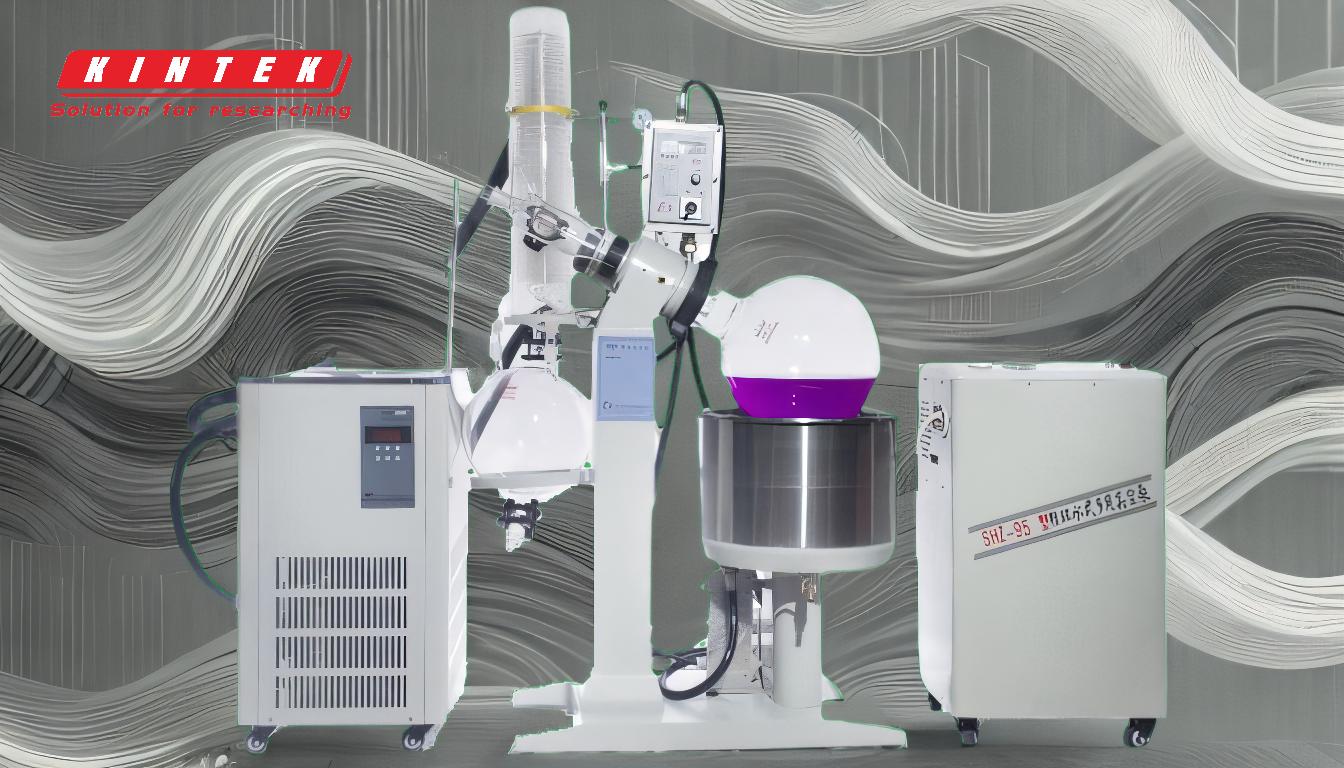Rotating the round bottom flask in a rotary evaporator serves multiple purposes that enhance the efficiency and safety of the evaporation process. The primary goal is to increase the surface area of the solvent, which accelerates the rate of evaporation. This is achieved through the centrifugal force generated by the rotation, which spreads the solvent into a thin film across the inner surface of the flask. Additionally, the rotation helps prevent "bumping," a phenomenon where rapid vapor formation can cause the liquid to splash. Combined with the vacuum and gentle heating, rotation ensures a controlled and efficient evaporation process.
Key Points Explained:

-
Increased Surface Area for Evaporation:
- The rotation of the round bottom flask spreads the solvent into a thin film across the inner surface of the flask. This significantly increases the surface area exposed to the vacuum and heat, which accelerates the evaporation process.
- A larger surface area allows more solvent molecules to escape into the vapor phase at any given time, improving the overall efficiency of the process.
-
Prevention of Bumping:
- Bumping occurs when a large pocket of solvent vapor forms rapidly, displacing the surrounding liquid and causing splashing. This can lead to contamination or loss of the sample.
- The continuous rotation ensures that the solvent is evenly distributed, reducing the likelihood of localized overheating and the formation of large vapor bubbles.
-
Centrifugal Force and Thin Film Formation:
- The centrifugal force generated by the rotation keeps the liquid stuck to the inner walls of the flask, forming a thin, uniform film. This maximizes the surface area and ensures consistent exposure to the heat and vacuum.
- The thin film also facilitates faster heat transfer, further enhancing the evaporation rate.
-
Enhanced Efficiency Under Vacuum:
- The combination of rotation and vacuum reduces the boiling point of the solvent, allowing it to evaporate at lower temperatures. This is particularly useful for heat-sensitive compounds.
- The increased surface area and reduced boiling point work synergistically to make the evaporation process faster and more energy-efficient.
-
Controlled and Gentle Heating:
- The rotation ensures that the solvent is evenly heated by the water bath, preventing hotspots that could degrade the sample or cause uneven evaporation.
- Gentle heating, combined with rotation, ensures a smooth and controlled evaporation process, which is critical for maintaining the integrity of the sample.
-
Improved Recovery of Solvents and Samples:
- By speeding up the evaporation process and reducing the risk of bumping, rotation helps recover solvents and samples more efficiently.
- This is particularly important in applications where the solvent is expensive or the sample is precious.
-
Operational Safety:
- The rotation minimizes the risk of sudden boiling or splashing, which can be hazardous in a laboratory setting.
- A controlled evaporation process reduces the likelihood of accidents and ensures a safer working environment.
In summary, rotating the round bottom flask in a rotary evaporator is a critical step that enhances the efficiency, safety, and control of the evaporation process. It maximizes surface area, prevents bumping, and ensures uniform heating, all of which contribute to a more effective and reliable separation of solvents from samples.
Summary Table:
| Key Benefits | Explanation |
|---|---|
| Increased Surface Area | Rotation spreads solvent into a thin film, accelerating evaporation. |
| Prevention of Bumping | Continuous rotation reduces splashing and sample loss. |
| Centrifugal Force & Thin Film | Forms a uniform film for faster heat transfer and evaporation. |
| Enhanced Efficiency Under Vacuum | Reduces boiling point, enabling lower-temperature evaporation. |
| Controlled & Gentle Heating | Ensures even heating, preventing sample degradation. |
| Improved Recovery | Speeds up evaporation and minimizes solvent/sample loss. |
| Operational Safety | Reduces risks of sudden boiling or splashing, ensuring a safer lab environment. |
Optimize your rotary evaporation process—contact our experts today for tailored solutions!











